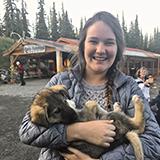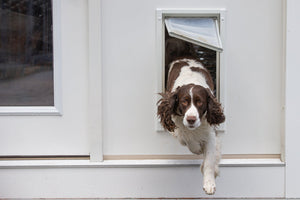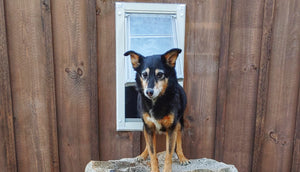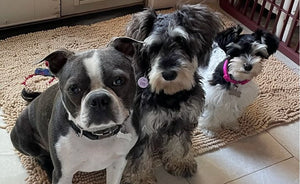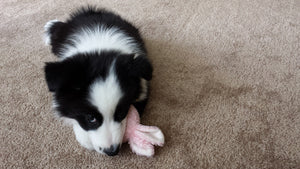How to Potty Train a Puppy
Bringing a new puppy home is an exciting adventure. As adorable as a fluffy, tiny puppy is, there can be some challenges when it comes to potty training. Potty training a puppy takes time and patience, and it’s important to maintain consistency so that your puppy learns that your home isn’t one giant bathroom.

In this guide, we’ll walk you through the basics of potty training a puppy, such as how often to take your puppy out and how to encourage them with positive reinforcement.
How to Set a Puppy Potty Training Schedule
Puppies will need to go to the bathroom quite often throughout the course of the day. Ideally, these are the times your puppy should be taken out throughout the day:
- Right when you wake up in the morning
- After your puppy’s regular mealtimes
- After playtime
- After naps
- Before you go to bed at night
You can establish a routine that works for you and your puppy that’s scheduled around the events listed above. Typically, puppies will need to go out every two hours.
How to Potty Train a Puppy
Once you establish the routine you will have, it’s time to start the actual training. The steps below:
Step #1: Pick a Bathroom Spot.
Picking a set spot in your yard creates a consistent space where your puppy can do their business. Taking your puppy to this same spot every time they go will create a sense of security and confidence.
Step #2: Use a Praise Word.
Every time your puppy goes to the bathroom in the set spot, say a word or phrase like “do your business.” This will teach your puppy to associate the word or phrase you choose with going to the bathroom. The goal here is to be able to use that word or phrase in the future to let your dog know it’s time to go outside and use the bathroom.
Step #3: Reward Good Behavior.
Choose a consistent reward to give your puppy every time they go to the bathroom outside. Generally, Immediately after they’ve finished, give them lots of verbal praise and love to let them know it was a job well done. Immediately take them back inside afterwards and reward them with some playtime, a healthy treat, or a meal. Make sure not
Step #4: Repeat the Process.
Repeat these steps and maintain a consistent potty training schedule for about four to six months, or longer if your puppy is still having accidents in the home. The key is to maintain a consistent, predictable schedule your puppy can grow accustomed to throughout their training.
Potty Training Tips
Many puppies are fully potty trained by six months, but others may take up to a year. Here are some potty training tips to make the process a little easier.
Crate Train Your Puppy: Crate Training is a great way to provide your puppy a sense of security. This can help prevent accidents and improve your puppy’s confidence. Check out how to choose a crate size for your dog here. Knowing when your puppy will stop growing can help you choose the right size.
Establish a Consistent Feeding Schedule: A consistent feeding schedule goes hand-in-hand with potty training puppies. When your puppy eats at specific times of day, they develop a sense of pattern and routine. This also allows you to take your puppy out to the bathroom right after finishing a meal to reduce the risk of accidents.
Avoid Negative Reinforcement: Avoid any form of punishment when an accident happens. This will only make your puppy more confused and fearful. Often they will not associate the punishment with the accident and will become afraid of you instead. When accidents happen, clean them up with an odor-removing spray like nature’s miracle and immediately take your puppy outside to their potty spot.
Always Supervise Your Puppy: Puppies should always be closely supervised. Puppies younger than ten weeks cannot be left alone for more than an hour. Puppies from three to six months should not be left alone for longer than their age in months.
Once you start walking your puppy in the neighborhood, decide whether you want to use a collar or a harness. Check out this guide to predict how big your puppy will get based on their paw size.
